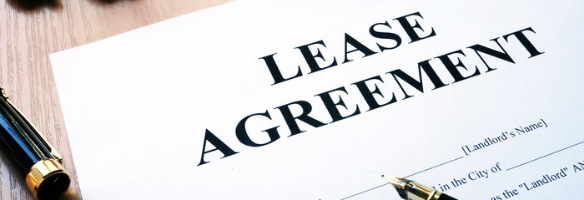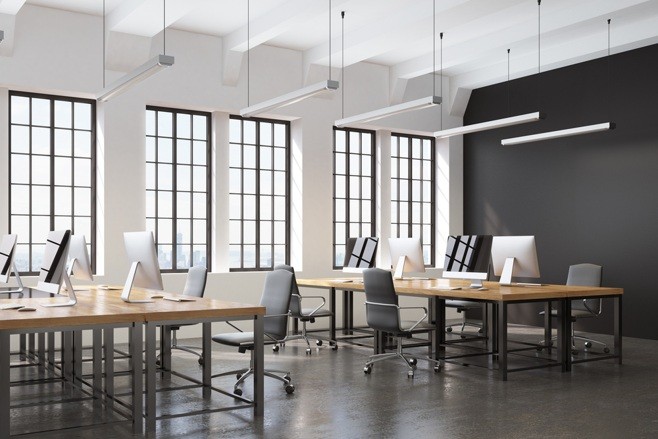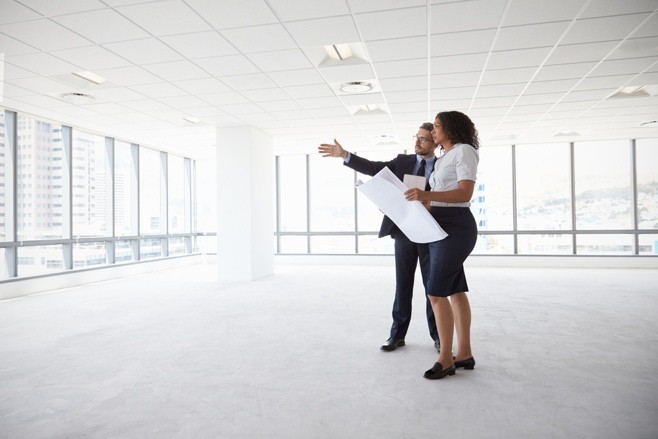Guide To Renting Commercial Property In The UK
Feb 26 2019
Darren Best

When it comes to commercial property, the question on most people’s lips is: should you rent or buy? If you, like many businesses in the UK, wish to rent commercial property instead of buying it, you may be wondering how to go about the process. In this renting commercial property guide, you will find out how to successfully rent commercial property for your business.
4 steps to follow when renting commercial property:
Step 1: Find the right commercial property
Step 2: Factor in all the costs
Step 3: Negotiate a commercial tenancy agreement
Step 4: Exchange contracts and complete
When you begin looking for a commercial property for your business, you will need to figure out whether you want to buy it outright or rent it from a landlord. Both scenarios are very different, so it is vital that you conduct careful research before you go ahead. If you decide against buying, what should you think about when renting a commercial property?
Step 1: Find the right commercial property for your business
 Photo credit: Sakarin Sawasdinaka / Shutterstock
Photo credit: Sakarin Sawasdinaka / Shutterstock
-
Type of commercial property
You will need to decide which commercial property will suit your company’s needs. Do you need a large space in the form of a warehouse, or a room-to-grow office space? It is important to think about your business strategy – do you anticipate your business growing in the near future? If this is the case, it may be a good idea to rent office space that allows you to expand and avoid relocating to another premises.
-
Research different locations
Just like if you were buying a house, location is one of the most important factors when finding premises to move your business into. Before you begin commercial property hunting, you must ensure you carry out thorough research of the area, as you may be tied into your contract for as much as five years.
You may also want to look for incentives to help you make the right decision, such as Business Improvement Districts (BIDs), Enterprise Zones and Local Enterprise Partnerships (LEPs). You may even want to consider areas where other people from your industry are currently residing. Although this may seem like a no-go area to some, in actual fact, the proximity of competitors isn’t always a bad thing for business.
In addition, you must also consider the following when choosing a commercial property for your business:
- Transport links
- Parking facilities
- Delivery facilities
- Proximity to customers/clients/staff
- The impression the commercial property gives
- Any local amenities
- Staff facilities
- Equipment and furniture
- Internet speeds
You should also remember to check the overall condition of the commercial property you are renting, in the same way you would if you were renting a house. Be sure to search the property for damp, cracks, plumbing and other issues that may need questioning with the landlord.
Step 2: Factor in the costs
 Photo credit: ImageFlow / Shutterstock
Photo credit: ImageFlow / Shutterstock
-
Research rent in the area
Rent is very important, especially if you are in a start-up and need to save as much money as possible to get off the ground. Therefore, you may want to rent commercial property in a less well-known or ‘up and coming’ area to begin with, before heading into the city, for example.
-
Paying rent
Unfortunately, the way in which you pay rent varies from landlord to landlord. Generally, rents are paid quarterly, in advance, on March 25th, June 24th, September 29th and December 25th. However, it isn’t unusual for landlords to accept monthly rent payments now.
Bear in mind that if you have a long-term lease, your payment may include rent reviews every three to five years, which can alter the amount you pay over time. This amount can either increase or decrease, depending on the lease you agreed to. This is usually written in your rent agreement, so consider how often these rent reviews take place before signing on the dotted line – particularly if the area is prone to fluctuating rents.
-
Business rates
As well as commercial property rental costs, you must also need to factor in business rates – a tax you must pay on non-residential buildings in England and Wales. The rates cover all different kinds of commercial property, including shops, offices, pubs, warehouses and factories and are typically paid for by the tenants. It is worth noting that business rates tend to add around 40% to the cost of renting a shop or office, so be sure to add this when calculating the final price.
There are two main factors used to calculate business rates – the rateable value of the commercial property, and the level of the uniform business rate (UBR). A re-evaluation of the business rates to reflect any changes in the commercial property market tend to happen every five years.
You must also take into account that there may also be additional payments to be made by businesses with a high rateable value. For instance, in 2010 the Mayor introduced a 2p levy on non-domestic properties with a rateable value of over £55,000 in London to help fund the high-speed Crossrail.
However, if you are a small business with a rateable value of less than £15,000, you can apply for exemptions to paying business rates and extra fees by claiming “small business relief”.
 Photo credit: kan_chana / Shutterstock
Photo credit: kan_chana / Shutterstock
-
Watch out for hidden costs
When renting, you must take into account all of the hidden costs you may encounter. Even though you will have probably factored an apportioned cost of the premises into your purchase price for the business and, if you’re working with a solicitor, a fixed price quote for their legal fees, you should have a rough understanding of how much the process is going to cost you altogether. However, much like when you buy a house of your own, when you move business premises, you may encounter additional costs that you might not be aware of.
Such as:
- Rent deposit (usually the equivalent of three to six months rent)
- Payment of the landlord’s legal fees (from £500 to £3,000) which is often paid upfront as the landlord will require an undertaking that the funds are held on account and that their costs will be paid before they instruct their solicitor to undertake any work on the matter
- Payment of Land Registry and other search fees (approximately £250 to £400)
- Fee for Notice of Assignment (£50)
Additionally, you may be expected to cover all or part of the service charges on the commercial property you are renting. This includes the maintenance and any repair or redecoration work. However, keep in mind that any DIY or decoration work is limited when renting commercial property, so always check with your landlord beforehand. If your landlord is responsible for insurance, you may be required to share the cost too – this will all be written in the contract.
As well as service charges, you may also have to pay energy costs too. Commercial properties often consume a lot of energy, so before renting commercial property, your landlord is required to provide you with an Energy Performance Certificate (EPC) showing you how energy efficient the commercial property is.
Other factors to work into your budget may include:
- Professional advice from commercial estate agents and solicitors
- Local authority charges
- V.A.T
- Stamp Duty Land Tax on commercial property valued above a certain threshold (based on the premium and rent)
- Moving costs
- Decoration, repairs and ongoing maintenance
Step 3: Negotiate a commercial tenancy agreement
 Photo credit: Atstock Productions / Shutterstock
Photo credit: Atstock Productions / Shutterstock
To rent commercial property, you must sign a lease agreement or licence. A lease is a legally-binding contract which sets out the terms and conditions of the tenancy agreement between landlord and tenant. It offers long-term stability compared to a licence, for example.
Before agreeing to a commercial property lease, you will need to agree with your landlord on the following:
- Lease length and any break clauses
- Rent and rent-free periods
- When and how rent reviews will be made
- Service and maintenance charges – total cost, what it includes and whose responsibility it is
- When and how bills will be paid
The Royal Institution of Chartered Surveyors (RICS) advises taking note of what the proposed contract contains on service charges, rent reviews, subletting space, assigning the lease, repairing and decorating obligations and personal guarantees.
If you are looking to occupy commercial property for a short period of time (up to six months), licences are a good option, particularly if you are a start-up. They are available on a variety of types of commercial property, such as pop-up shops, warehouses refurbished and divided into office space, and industrial buildings.
The licence fee – equivalent of rent – can be due monthly in advance, or even on a weekly basis; this is entirely at the discrepancy of the landlord. However, it is worth noting that if you wish to stay in the commercial property after your licence is up, you will have no right to renew it.
 Photo credit: Monkey Business Images / Shutterstock
Photo credit: Monkey Business Images / Shutterstock
-
When to agree to a contract?
Once you have submitted an offer on a commercial property to an agent, it is then up to the landlord and the business owner to discuss and agree on the terms. This is not agreed in the first instance and can be subject to extensive negotiation for both parties to be happy.
When an offer is finally accepted, ask the landlord to refrain from marketing the commercial property any further. This may prevent the rental from going through, as the landlord may be tempted by another offer on the table from another business – the last thing you need.
In a document, the landlord will list the key points discussed in the agreement and generally includes the following:
- Type of agreement
- Description of the deal
- Rental value, currency and payment arrangements
- The proposed timescale, including the date of completion
Bear in mind that this is not a legally binding contract, it is just a draft of the main contract known as “Heads of Terms”.
At this point, it is worth carrying out a building survey to ensure you are aware of any problems with the building before you move into the property. This is vital if you and your landlord have agreed that you are paying for the service and maintenance costs, as any repair work may be expensive and another factor to consider into your monthly outgoings.
As a result, as a tenant you should set up a Schedule of Condition Report to show the landlord the condition of the property using photographs and attach it to the commercial tenancy agreement. This means the landlord cannot make you liable for any damage or repairs if it was there to begin with.
A local search is also a good idea to establish if there are any plans that may impact the commercial property you plan to rent and the wider area. The search shows entries kept by the local council, and usually cover:
- Planning and building regulations
- Roads
- General matters
Step 4: Exchange contracts and complete the deal
 Photo credit: wutzkohphoto / Shutterstock
Photo credit: wutzkohphoto / Shutterstock
You will exchange contracts once the money is in place and your commercial agent and solicitor are satisfied with the state of the commercial property as well as the contract. This deal will be a legally-binding contract when the contracts are exchanged. Completion happens once the balance is paid.
If you are not sure whether renting is the right route for you, consider purchasing commercial property instead. If you need any help with relocating your commercial property premises, whether you are renting or buying, don’t hesitate to get in touch with us at Savoy Stewart.
Feature image credit: designer491 / Shutterstock